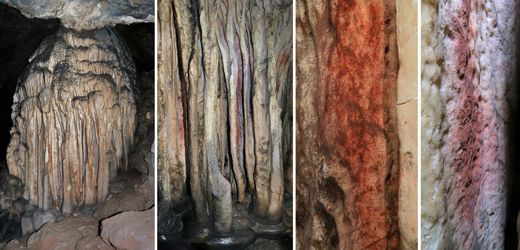
Researchers have found further evidence that, contrary to popular belief, the Neanderthals certainly had a sense of art.
An article published Monday in the US journal “PNAS” clearly attributes the painting of stalagmites in a cave in southern Spain to the relatives of modern man.
The assumption that Neanderthals could be the originators of cave art in Ardales near Malaga was first voiced in 2018 – and had caused considerable debate. Investigations of the colour layers on the rock forms had dated them to more than 64,800 years ago. Modern man did not yet live in Europe at that time, and therefore was out of the question.
However, another scientific publication later stated that a natural origin of the color layers could not be ruled out. Investigations have now refuted this possibility, Francesco d’Errico, co-author of the article, told the AFP news agency. “These are ochre pigments that were probably brought into the cave.«
The analyses have also shown that the painted stalagmites have different types of color pigments that were applied at different times. This ” supports the hypothesis that the Neanderthals came several times, over several thousand years, to mark this cave with pigments,” says d’Errico, who conducts research at the University of Bordeaux.
“This is not exactly what you can call art”
However, the stalagmite art of the Neanderthals can only be compared to a limited extent with cave paintings of modern man, which were found in numerous places, especially in today’s France. “This may not be exactly what you can call art,” admitted the researcher. But it was in any case a kind of “symbolic action”.
At the beginning of July, research results from scientists at the University of Göttingen had already proven the “creativity” of Neanderthals. Accordingly, patterns on a 50,000-year-old deer bone clearly turned out to be ornaments. The foot bone of a giant deer was probably first cooked in order to carve the pattern with stone tools into the softened bone surface.
Jewelry objects of the Neanderthals had never been dated to be older than about 40,000 years. Therefore, many researchers consider them imitations, because by that time modern man had already spread to parts of Europe. But apparently, the Neanderthal man also had an independent creative power.


